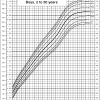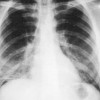Educating Young Adults About HIV and AIDS: the Impact of Direct Response Television Public Service Advertising
ABSTRACT Limited resources combined with a desire to reach as many people as possible often make direct response public service announcements an important tool in educational campaigns. To understand the impact of direct-response TV PSAs, and find ways to increase their effectiveness, this study examined 1) the effects of a highly targeted HIV prevention message on young adults’ knowledge, perceptions, and intentions; and 2) whether altering two PSA elements, the telephone number used and the length of time it was displayed, would affect viewers’ recall and intention responses. … Read more



